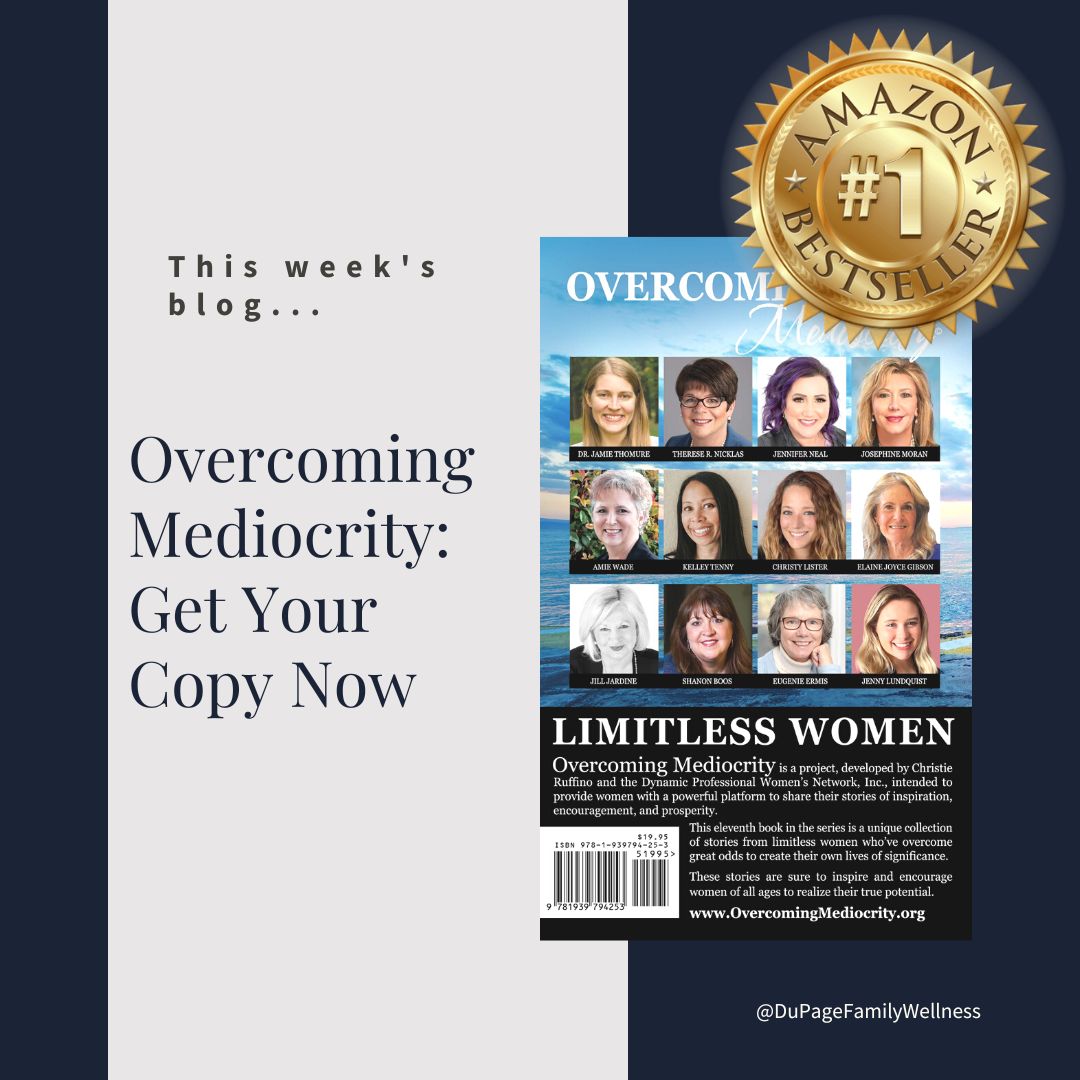 It’s been nine months since “Overcoming Mediocrity” was first published. It’s weird to think that I am a published author. I was honored to share the story of discovering my passion along with 20 other women of influence.
It’s been nine months since “Overcoming Mediocrity” was first published. It’s weird to think that I am a published author. I was honored to share the story of discovering my passion along with 20 other women of influence.
The book is designed to inspire you to find what brings you life and help you step into a life driven by your passion. Sometimes the road to living a fulfilling life is straightforward, but more often than not it is filled with bumps and turns along the way.
My story begins as a child when my family struggled with insulin issues. The series of events that followed eventually led me to find my passion in life.
Here is a little excerpt from my story…
“Growing up my grandpa was one of my favorite people. He was quite the jokester and was always trying to pull a fast one on me. My family went to his house on weekends, and he always made me feel like the most special girl in the world (other than my sister who I’d like to think was a close second).
One evening, as we were preparing dinner my grandfather started acting funny. He was pale and seemed shaky. His words were slurred and didn’t seem to make sense. I didn’t know why my grandpa, who was always so strong, was acting so strange. It was scary!
My grandma ran over to the refrigerator, grabbed the orange juice, and poured him a cup. A few minutes later, Grandpa was back to his normal self.
“What happened?” I asked. I knew my grandpa was a type one diabetic, but I had never known what that meant.”
From here the universe led me to discover my passion. I hope you’ll enjoy reading the rest of my story, but even more than that, I hope you’ll let our stories inspire you to find your passion and live your best life!
Dr. Jamie
P.S. If you are interested in getting your own copy of Overcoming Mediocrity send me a quick message asking me to set one aside for you. We can schedule a time for you to pick it up in the office.
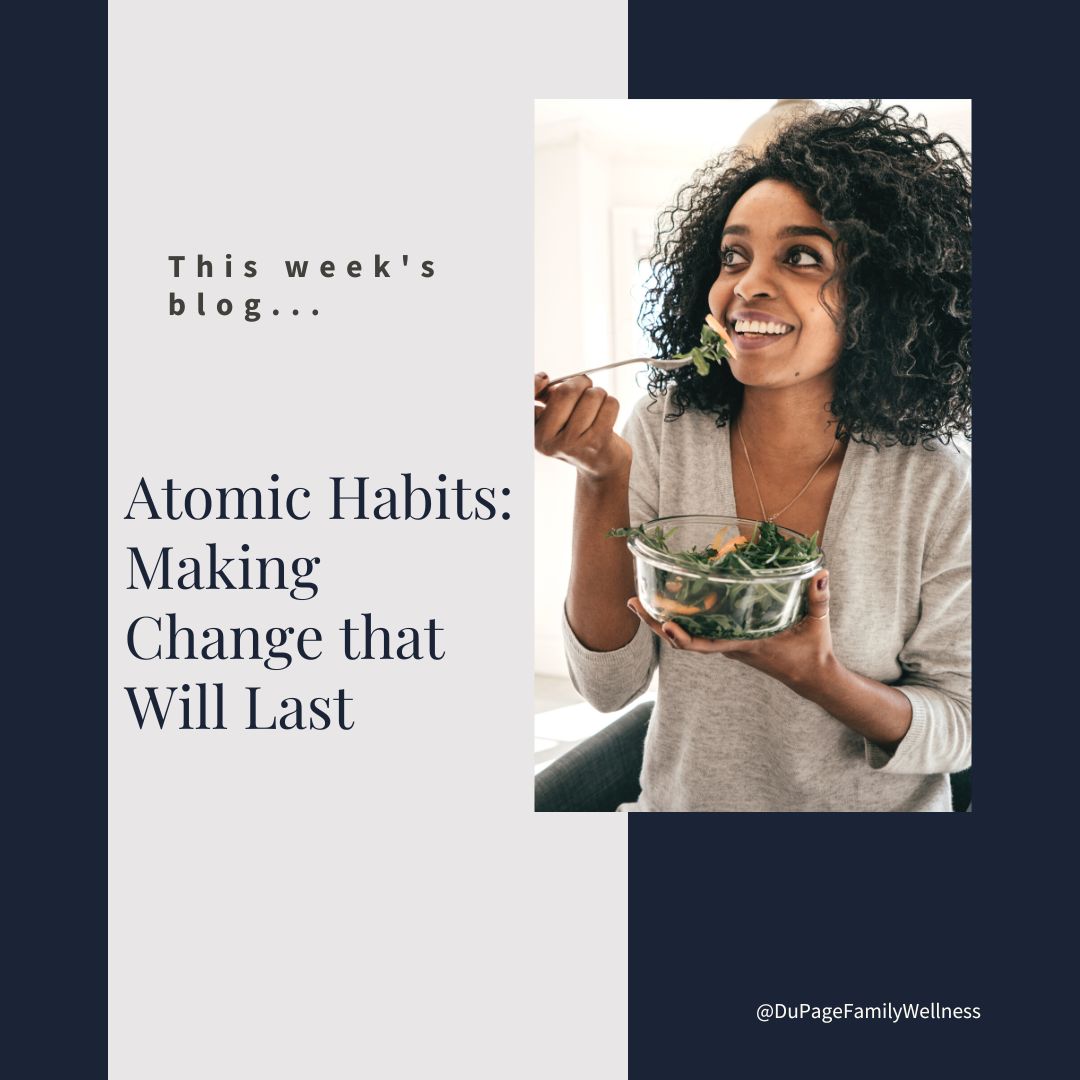 Have you ever wanted to start a habit and failed miserably? Perhaps you didn’t have the motivation to get started. Perhaps you started and didn’t keep up with it. Either way, it can be quite frustrating. You know what you want to do and ask yourself why you aren’t doing it.
Have you ever wanted to start a habit and failed miserably? Perhaps you didn’t have the motivation to get started. Perhaps you started and didn’t keep up with it. Either way, it can be quite frustrating. You know what you want to do and ask yourself why you aren’t doing it.
On the other hand, there may be bad habits that you want to break but continue to struggle with. You may wonder why it is so hard to stop doing things that you know are unhelpful for your goals even when you consciously try to change these habits.
I recently read the book Atomic Habits by James Clear. In it he discusses the process we go through to form habits, breaking it down in what he called “the habit loop.”
Let’s look at this cycle and see how we can use it to our advantage.
Overview of the Cycle
According to Clear, all habits are formed by the promise of reward through a four-step process called the habit loop. This loop consists of a cue, desire, response, and reward.
Our brains continually scan our environment for information. When the information presented predicts a reward Clear calls it a “cue.” Once the cue is noticed, a “craving” may happen where your desire of wanting the reward builds.
Finally, if the craving gives you enough motivation, it’s time for the “response.” The response is simply what you do to satisfy the craving. But we aren’t finished there, in order for a habit to be formed you must actually experience the “reward” in a satisfying way.
The final step in the habit cycle is just as important as the first. Without experiencing the “reward,” the habit will not stick. In fact, without each of these steps, a habit will not be formed.
As the loop is repeated over time, the cue is associated with the reward. This begins the cycle again and eventually, a habit will form. If any one of these steps is missing, the loop will not be completed and a habit will not form.

Read more ...
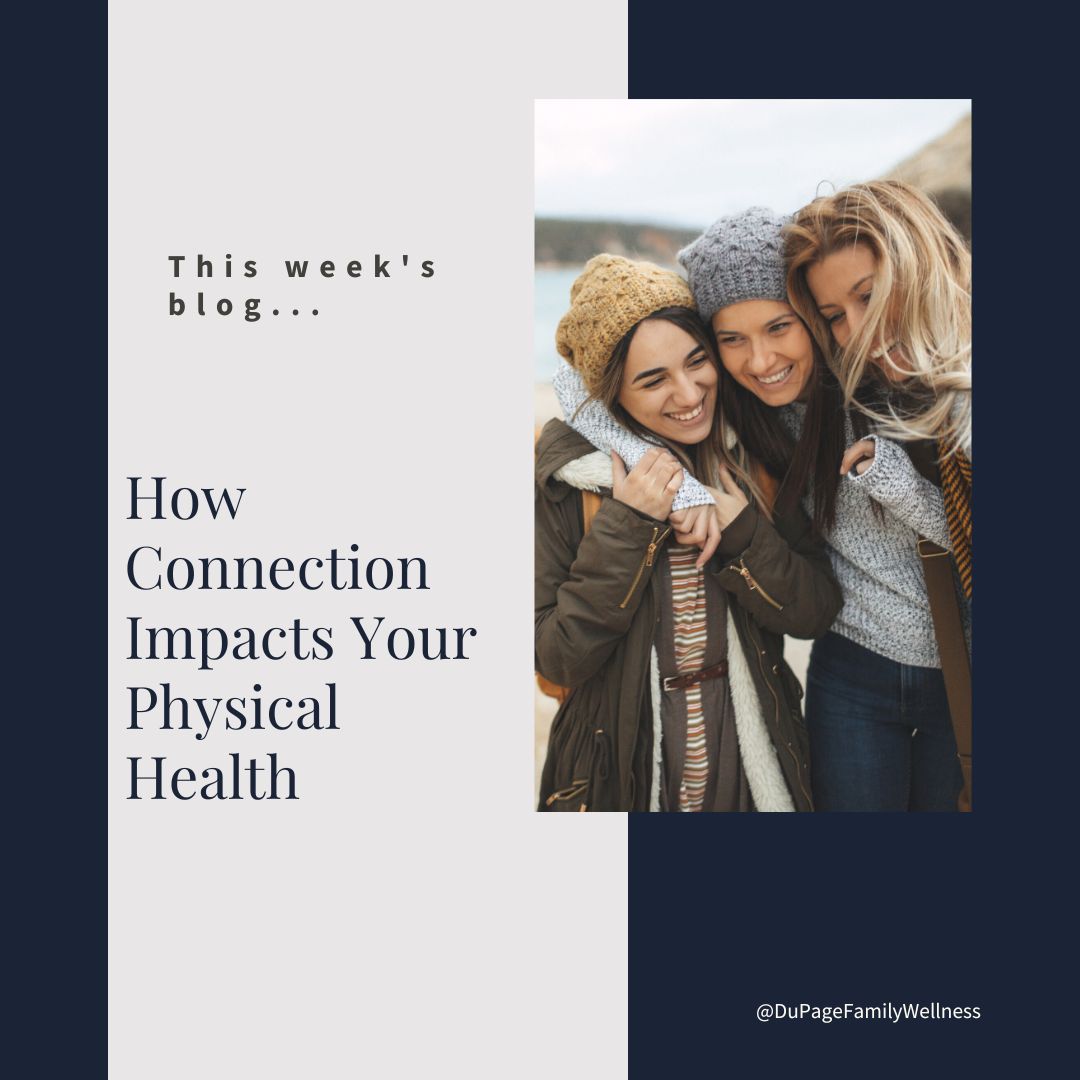 Enjoying social connections is more important for our health than most people realize! In fact, it can directly impact not only your mental health but your physical health as well!
Enjoying social connections is more important for our health than most people realize! In fact, it can directly impact not only your mental health but your physical health as well!
While most people think eating well, getting adequate movement, refraining from smoking, and limiting alcohol are the most important things you need to do to stay healthy, research shows that meaningful connection is extremely important too.
In a culture obsessed with hard work and accomplishments, social connections can feel like a luxury reserved for when the real work is done. But if we are truly putting our health first, connection is of utmost importance for both our physical and mental health.
Let’s look at some research that may lead you to add social connections to your list of healthy habits!
Social Connections Impact on Physical Health
It’s not hard to believe that those who feel more connected with others tend to have higher self-esteem, greater levels of empathy, and struggle less with anxiety and depression. But the extensive impact on physical health may come as a surprise to many.
According to Dr. Emma Seppala, the American Association for the Advancement of Science published a study that found that “a lack of social connection is a greater detriment to health than obesity, smoking, and high blood pressure.” A lack of social connections is actually linked to obesity levels, inflammation, and hypertension.
The health community needs to recognize the importance of connection as the healthy habits it is. When you look into the research, you will understand how crucial these connections are.
Show me the Research
Research done by Housekarl, Landis, and Umberson found that “studies… consistently show increased risk of death among persons with a low quantity, and sometimes low quality, of social relationships.”
Read more ...
 Are you sick of the cold weather and ready for spring to come? If you are like me, you can get a little stir crazy in the middle of winter.
Are you sick of the cold weather and ready for spring to come? If you are like me, you can get a little stir crazy in the middle of winter.
While I enjoy sledding and playing in the snow with my kids, it is a lot of work to get them ready! I find that we are not outside nearly as much when it’s cold. With this in mind, I have a challenge for you today.
I want to talk to you about the benefits of embracing extreme temperature exposures. You may be surprised to learn that practices like taking a cold shower or sitting in a sauna have many health benefits.
I invite you to come into this discussion with an open mind, no matter how much you would prefer to live in a steady warm climate year-round!
Our Ancestors
If you have been following me for a while, you may know that I often look at how our ancestors lived as a guide. There is a huge discrepancy between how our ancestors experienced the weather and how we experience it.
Our current society does not have the exposure to the elements that people did in our ancestors' time. We wake up in temperature-controlled homes, take warm showers, and even drive to work in comfortable cars that have been in the garage all night. Most of us work, live, and spend our time in buildings that maintain a very comfortable temperature.
This is much different than what our ancestors experienced. There were no grocery stores for our ancestors to pick up their food, but they still had to eat in the wintertime. This meant that they had to be out in the elements finding food to survive. Even when they were in their shelter with a fire going, it didn’t maintain a perfect 70 degrees temperature year-round.
Why it Matters
Our bodies have lots of systems in place to regulate our temperature - shivering, goosebumps, sweating, changes in metabolism, etc. It’s good for our bodies to practice using these systems.
If our bodies never have to challenge these systems, they likely won’t work as efficiently and effectively as if they were used regularly. While I am not suggesting we put ourselves in danger (frostbite, heatstroke, etc.), we do not want these systems getting too lax either.
Extreme temperature exposure benefits our mitochondrial function, immune system, fat storage, inflammatory levels, hormone production, cardiovascular system, blood sugar regulation, and detoxification.
Here is a great article as well as a scientific study with more details about hot and cold temperature exposure.
Read more ...
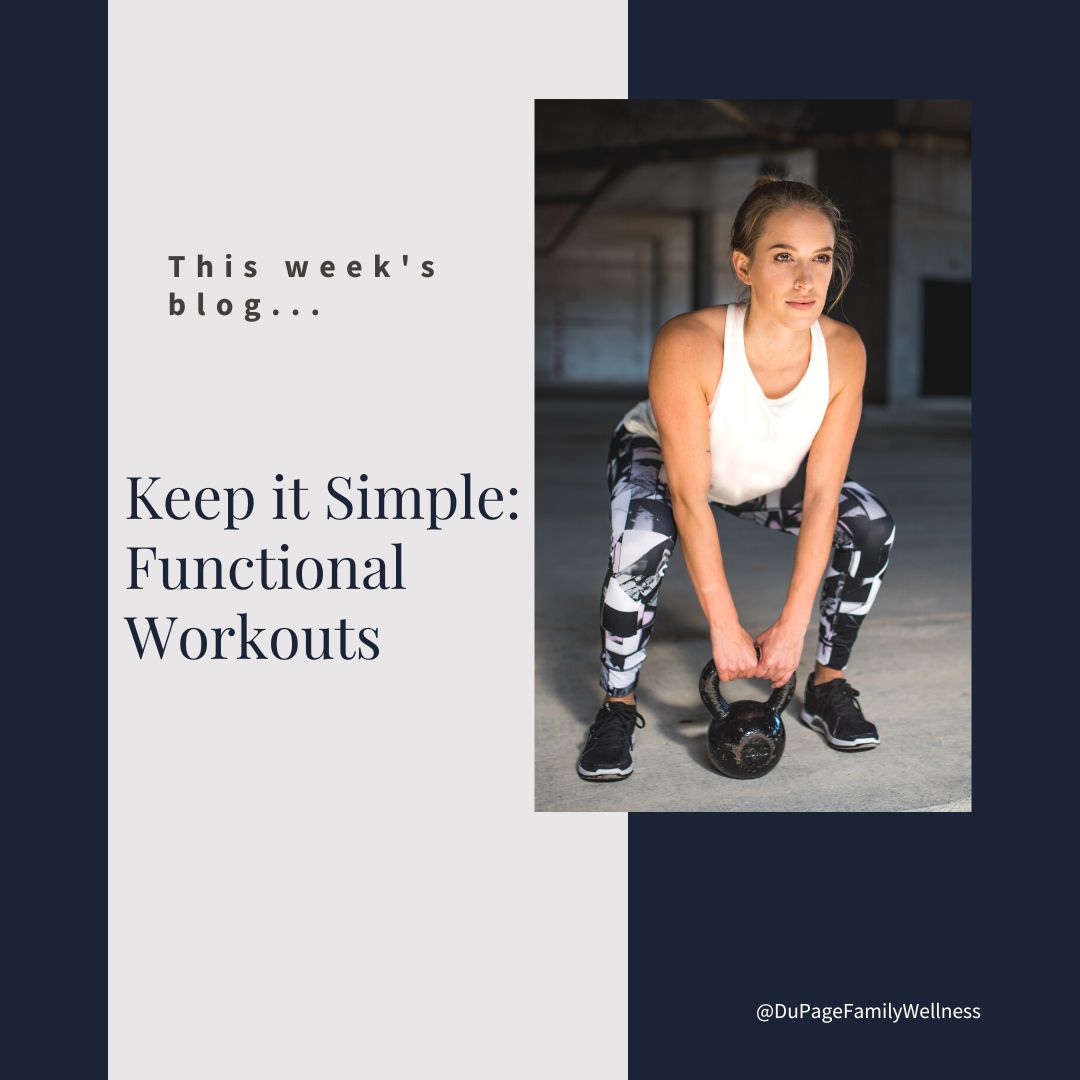 It can be intimidating to walk into a gym to start a new strength training or weight lifting routine. Many people feel like they need to follow a specific program or hire a personal trainer. While those can be helpful, you can also just start with the basics.
It can be intimidating to walk into a gym to start a new strength training or weight lifting routine. Many people feel like they need to follow a specific program or hire a personal trainer. While those can be helpful, you can also just start with the basics.
Working out doesn’t have to be complicated. When I go to the gym, I focus on large muscle movements that mimic real life activities. It doesn’t take long, but I am strengthening my body in a balanced way.
If you are unsure where to start in the gym, here is what I am currently doing.
Upper Body
For the upper body I focus on push, pull, and press:
- Push - This can be as simple as push ups if you are at home with no equipment. If you do have equipment, you can do a bench press, a band press, or my favorite at the gym is to use the cable pulley machine to do a pushing motion. If those sound too difficult, a wall push up can be a easy place to start.
- Pull - If you are at the gym, you can use the seated row machine or the cable pulley machine to do an upper body pulling motion. Another option here would be to use a dumbbell or kettle bell for a bent over row. At home, exericse bands can be a great option to do a pulling motion.
- Overhead press - Here, use light dumbbells for an overhead press or a band (or my tried and true cable pulley machine with the pulley in the lowest position to the angle of my press is as upward as possible)
- Overhead pull - At the gym you can use the lat pull down machine, or you can use a pulley machine or pull a band with a downward motion. If you have a bar, this can be a pull up. If you can't do a pull up, you can use a band or chair to hold some of your weight.
Lower Body
For the lower body:
- Squat (I.e. standing from seated) - This can be done as simply as standing up from a chair or bench (air squats), or with weight (using a bar on shoulder for back squat, or dumbbells or kettlebells in hand)
- Deadlift (i.e. picking things up off the ground)- with a barbell, dumbbell, or kettle bell
Read more ...
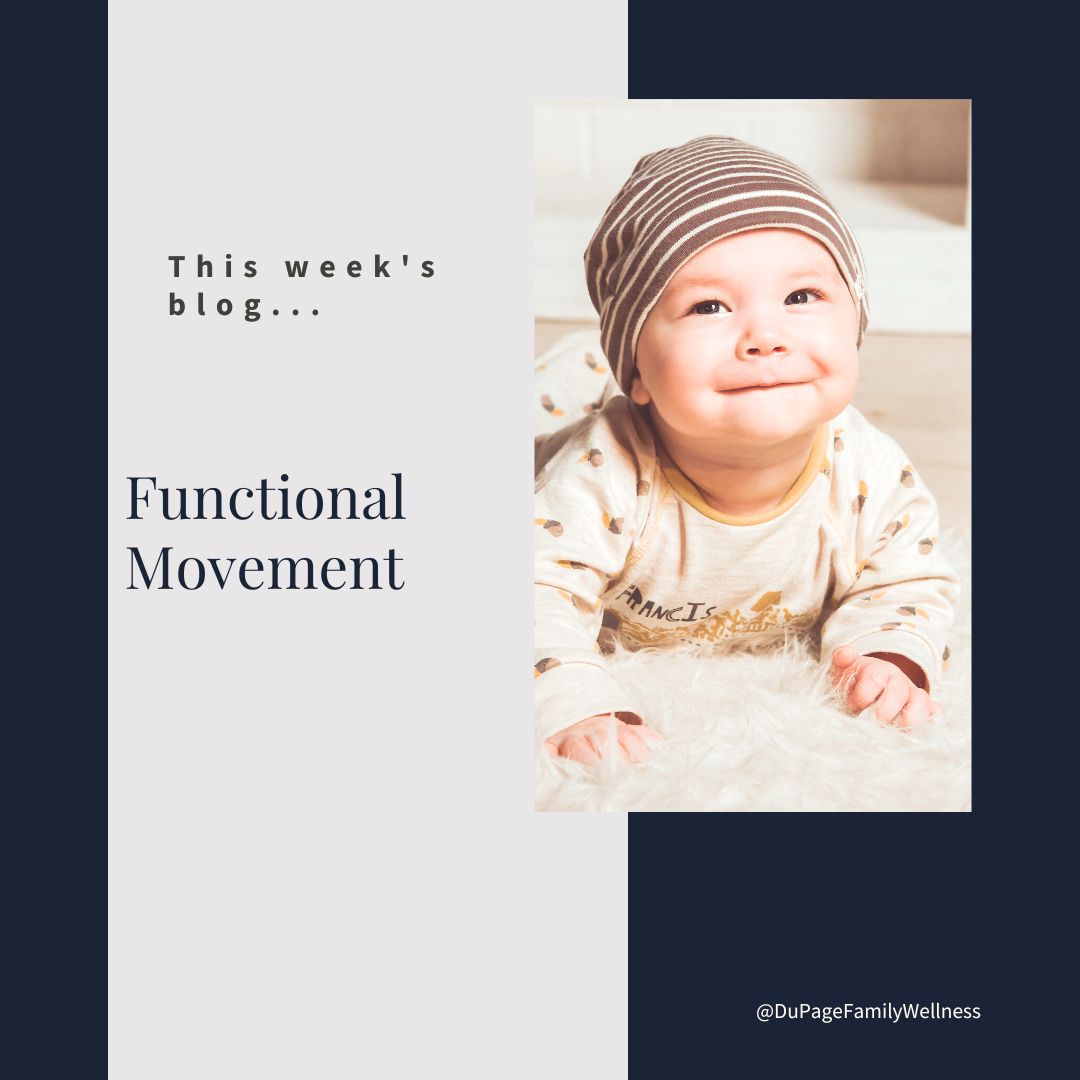 Since we do not have to teach babies how to move, we typically don’t think about all that goes into their development. If we look closely, however, there is much that we can learn from the amazing process these little ones go through as they grow.
Since we do not have to teach babies how to move, we typically don’t think about all that goes into their development. If we look closely, however, there is much that we can learn from the amazing process these little ones go through as they grow.
While each baby develops at their own pace, they generally develop certain movements in a way that builds upon each other. At first, they strengthen their core by laying on their back and kicking their legs. Then they strengthen the muscles needed to lift their heads, rollover, and crawl.
As we become adults, we are impacted by our environment to move in less effective ways. Research has found that the way a baby moves is the most efficient way to move. When we deviate from this type of movement we will not function at our best.
Let’s look at a set of simple functional movement exercises that can get our bodies moving in more effective ways.
Functional Movement
Functional Progression exercises are modeled after babies and how they move, organize movement patterns, and learn to stabilize. They allow us to reestablish movement patterns so that they become natural again.
As you go through these exercises, your body will begin to automatically move more effectively. You won’t have to think about it and struggle to move in a certain way. They are simple movement patterns and it doesn't take much time to incorporate these movements into your daily life.
Where to Begin
You will begin like a baby begins lying on their backs breathing from the diaphragm.
Breathing properly is a foundational piece of movement. Unfortunately, most adults do not breathe in a natural way. In fact, a pilot study of 96 people in 2003 that assessed breathing mechanics found that only 25% of people breathe properly.
Using the wrong muscles to breathe can lead to a host of problems such as recurrent chronic fatigue, anxiety, panic attacks, as well as many musculoskeletal symptoms.
If you are trying to make changes in the way that you breathe, it will take some time. But you can make real changes if you try to focus on your breathing technique at least once an hour. This video will show you what you should be doing to breathe properly.
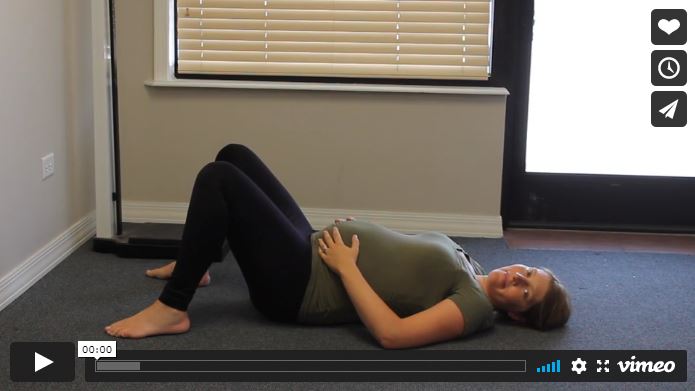
Remember, this is the foundation for all the other functional movement exercises, so don’t skip this important step.
Read more ...
 It’s been nine months since “Overcoming Mediocrity” was first published. It’s weird to think that I am a published author. I was honored to share the story of discovering my passion along with 20 other women of influence.
It’s been nine months since “Overcoming Mediocrity” was first published. It’s weird to think that I am a published author. I was honored to share the story of discovering my passion along with 20 other women of influence. 

 Have you ever wanted to start a habit and failed miserably? Perhaps you didn’t have the motivation to get started. Perhaps you started and didn’t keep up with it. Either way, it can be quite frustrating. You know what you want to do and ask yourself why you aren’t doing it.
Have you ever wanted to start a habit and failed miserably? Perhaps you didn’t have the motivation to get started. Perhaps you started and didn’t keep up with it. Either way, it can be quite frustrating. You know what you want to do and ask yourself why you aren’t doing it. Enjoying social connections is more important for our health than most people realize! In fact, it can directly impact not only your mental health but your physical health as well!
Enjoying social connections is more important for our health than most people realize! In fact, it can directly impact not only your mental health but your physical health as well! Are you sick of the cold weather and ready for spring to come? If you are like me, you can get a little stir crazy in the middle of winter.
Are you sick of the cold weather and ready for spring to come? If you are like me, you can get a little stir crazy in the middle of winter.  It can be intimidating to walk into a gym to start a new strength training or weight lifting routine. Many people feel like they need to follow a specific program or hire a personal trainer. While those can be helpful, you can also just start with the basics.
It can be intimidating to walk into a gym to start a new strength training or weight lifting routine. Many people feel like they need to follow a specific program or hire a personal trainer. While those can be helpful, you can also just start with the basics. Since we do not have to teach babies how to move, we typically don’t think about all that goes into their development. If we look closely, however, there is much that we can learn from the amazing process these little ones go through as they grow.
Since we do not have to teach babies how to move, we typically don’t think about all that goes into their development. If we look closely, however, there is much that we can learn from the amazing process these little ones go through as they grow.